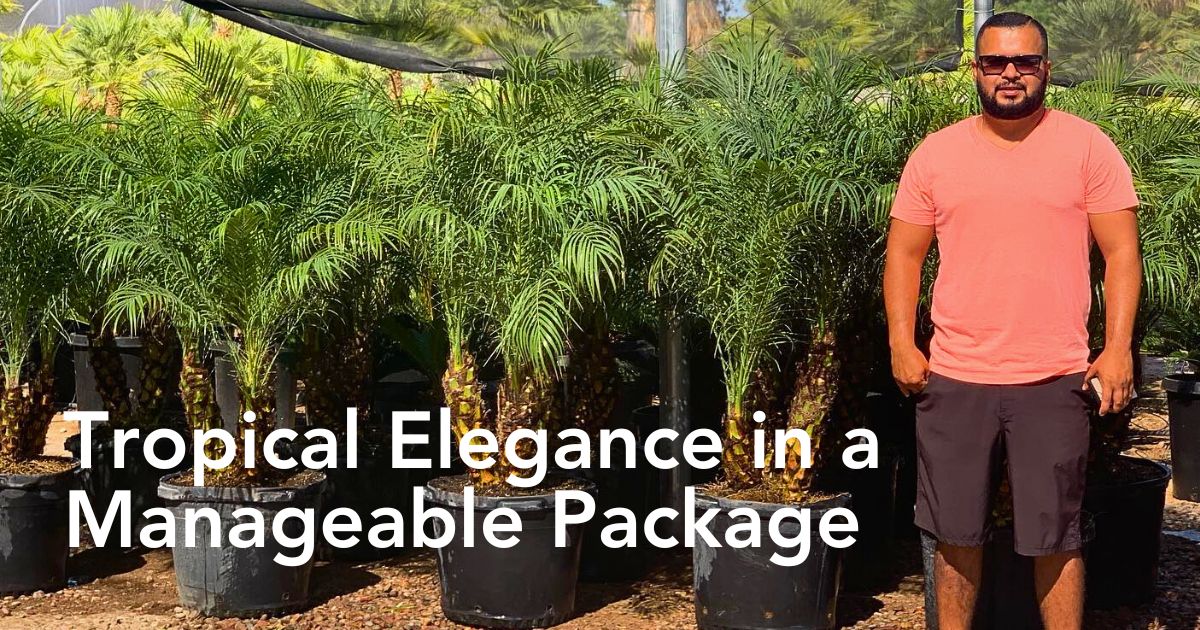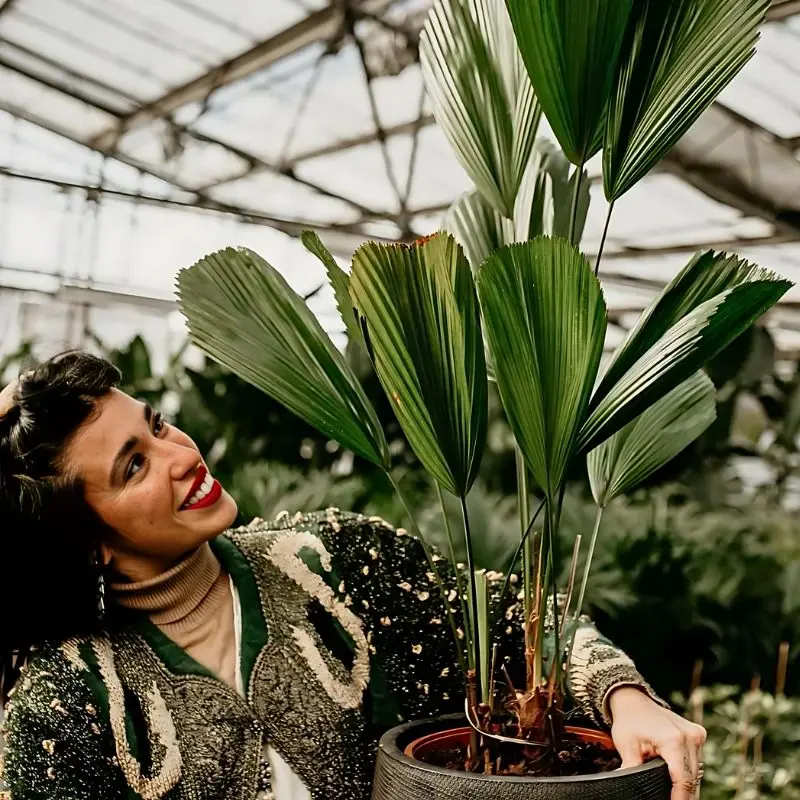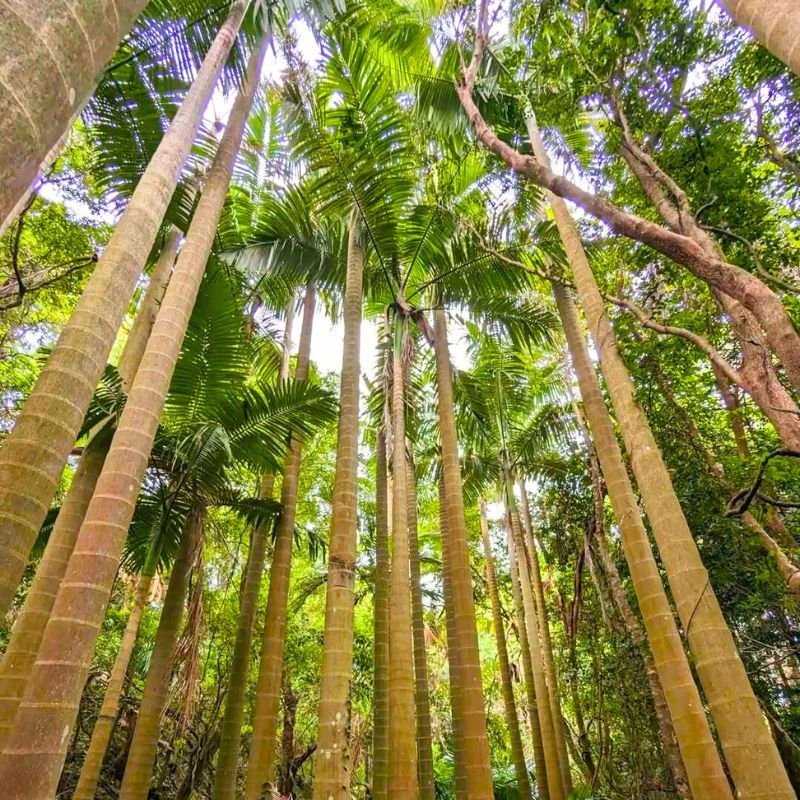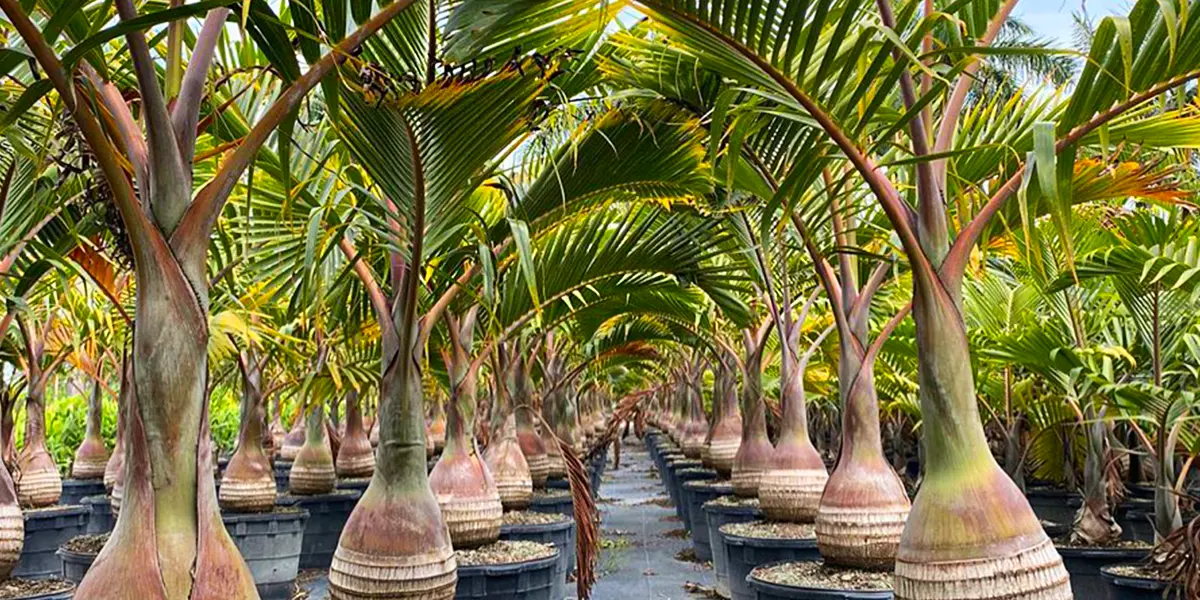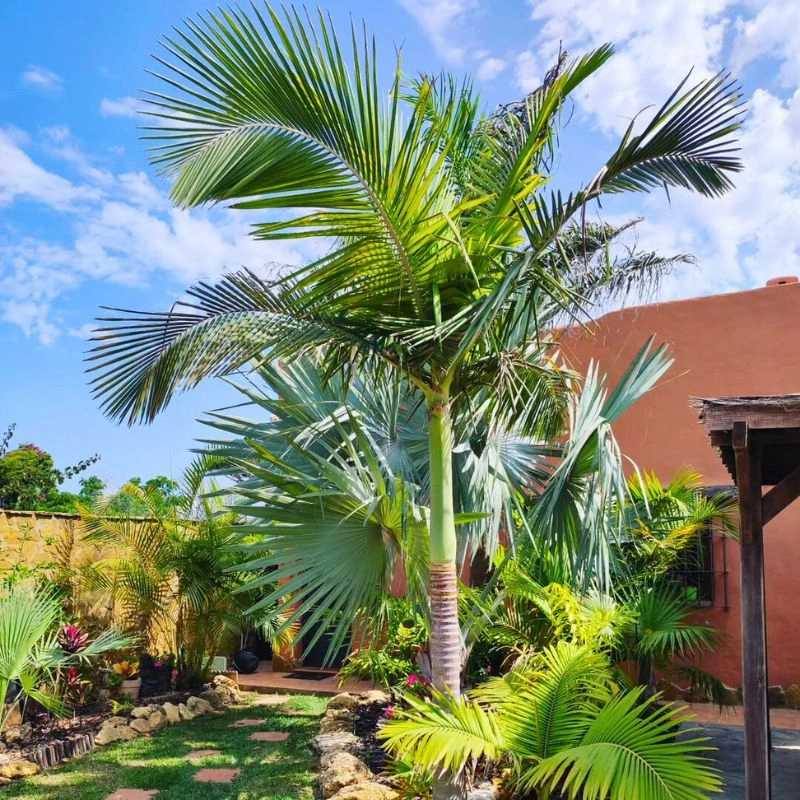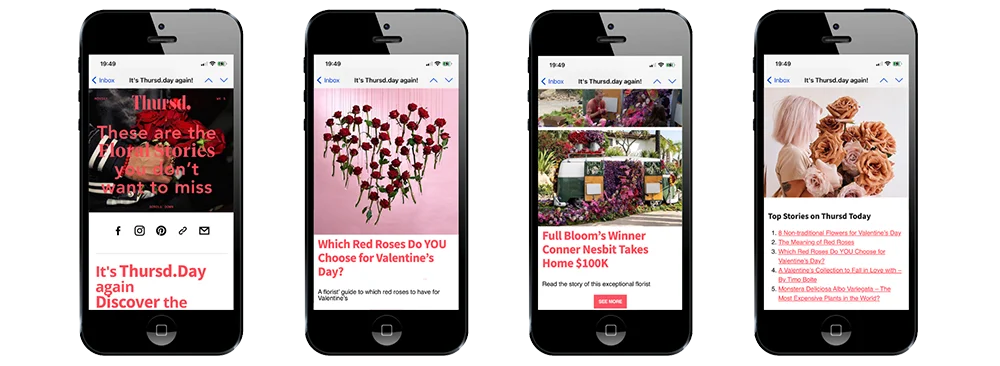Sometimes, the most delightful garden and landscaping designs begin with the least expected elements. The pygmy date palm proves this beautifully. It offers all the tropical elegance of its towering cousins, but in a perfectly manageable package, softly speaking its gracefulness, rather than shouting it. This palm, basically, creates intimate spaces infused with gentle sways and exotic charm.
Essentially, whichever way one decides to use it, this adaptable pygmy palm brings a touch of far-off places home. And with its feathery fronds and unhurried growth, it gives ordinary and boring corners a sense of peaceful, tropical retreat. Definitely, you’d want to know more about this surprisingly easy-going palm.
Understanding the Pygmy Date Palm
The pygmy date palm, also called the dwarf date palm, miniature date palm, or Robellini palm, belongs to the Arecaceae family. Scientifically known as Phoenix roebelenii, this small evergreen palm typically reaches heights of 24 meters (6-12 feet) with a spread of about 2-3 meters (6-10 feet), making it wonderfully manageable for home cultivation.
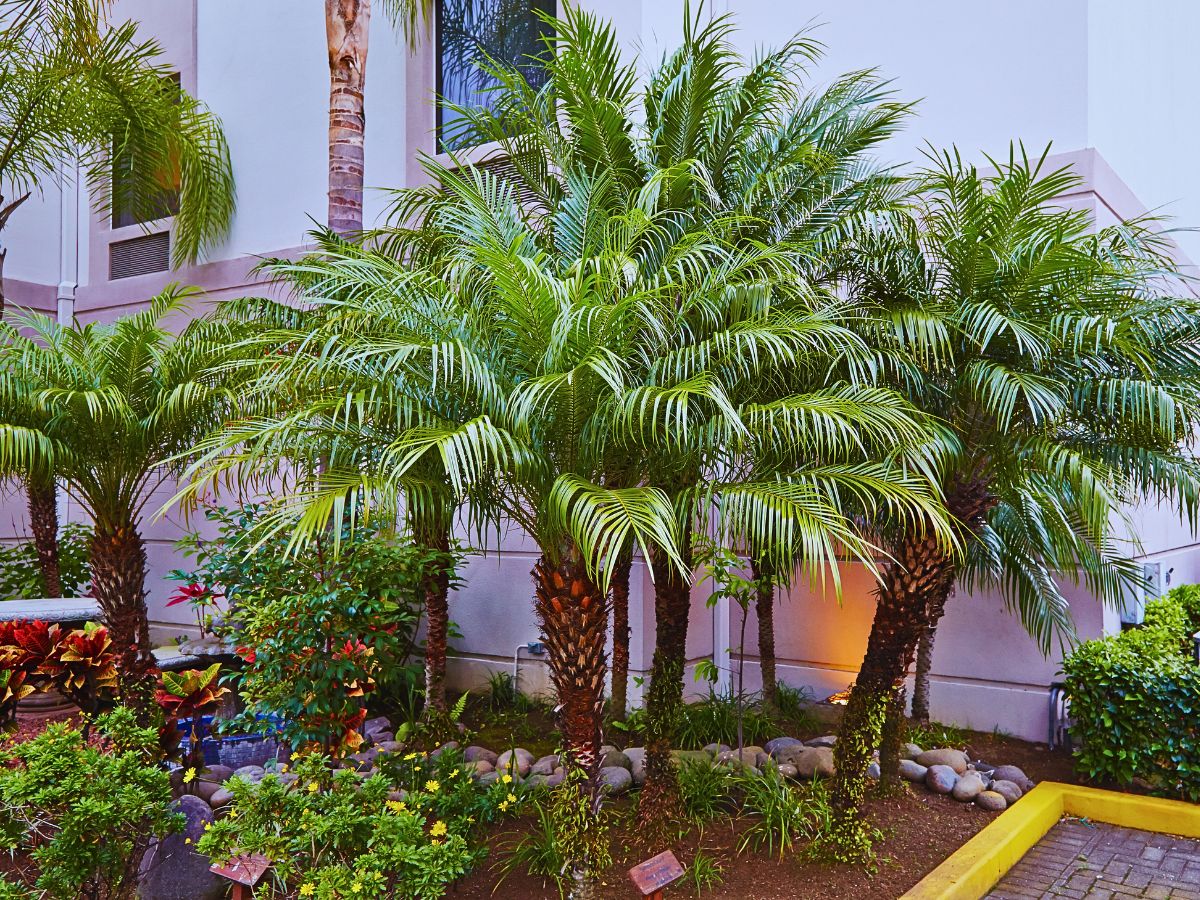
Its scientific name honors Carl Roebelen, a German orchid collector who brought this species to botanical attention in the late 1800s. This charming member of the Phoenix genus earned its common name from its compact stature compared to towering relatives like the Canary Island date palm or the true date palm that produces edible fruits.
The miniature date palm develops a single trunk crowned with 20 to 40 gracefully arching fronds. Each frond reaches 60-90 cm (2 to 3 feet) in length, with individual leaflets measuring 15-25 cm long and 1 cm wide, displaying a gentle grey-green color with a slightly drooping habit. The trunk, ranging from 3-6 inches in diameter, can grow straight or curve naturally toward light sources, creating an organic sculptural quality with its distinctive diamond-patterned texture from old leaf scars.
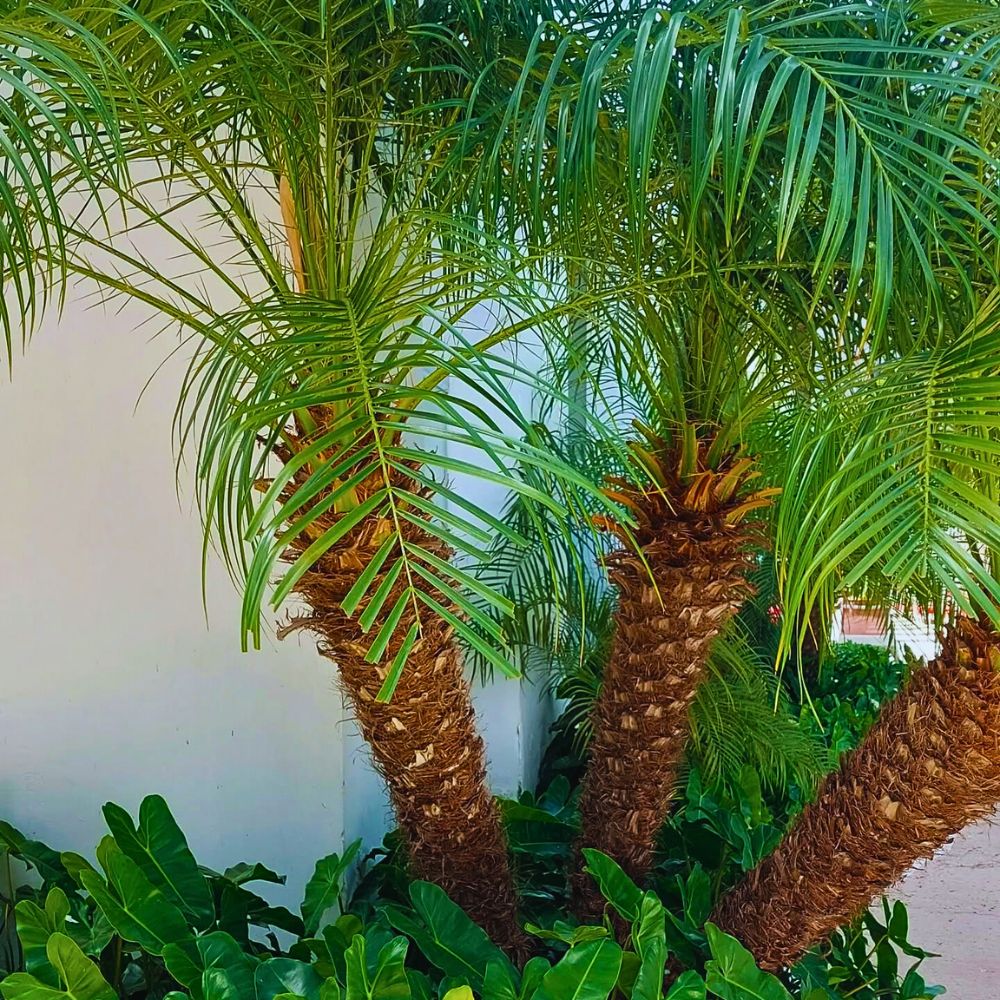
Unlike many palm species that produce either male or female flowers, the pygmy date palm is dioecious, meaning individual plants are either male or female. Female plants produce small, dark purple dates that are technically edible but quite astringent and rarely consumed.
Origins and Global Adoption of Pygmy Date Palms
This tropical beauty originates from the humid forests of Southeast Asia, specifically southwestern China's Yunnan Province, northern Laos, and northern Vietnam. In its native environment, the pygmy date palm naturally grows along riverbanks and in forest understories, thriving in warm, humid conditions with partial shade.
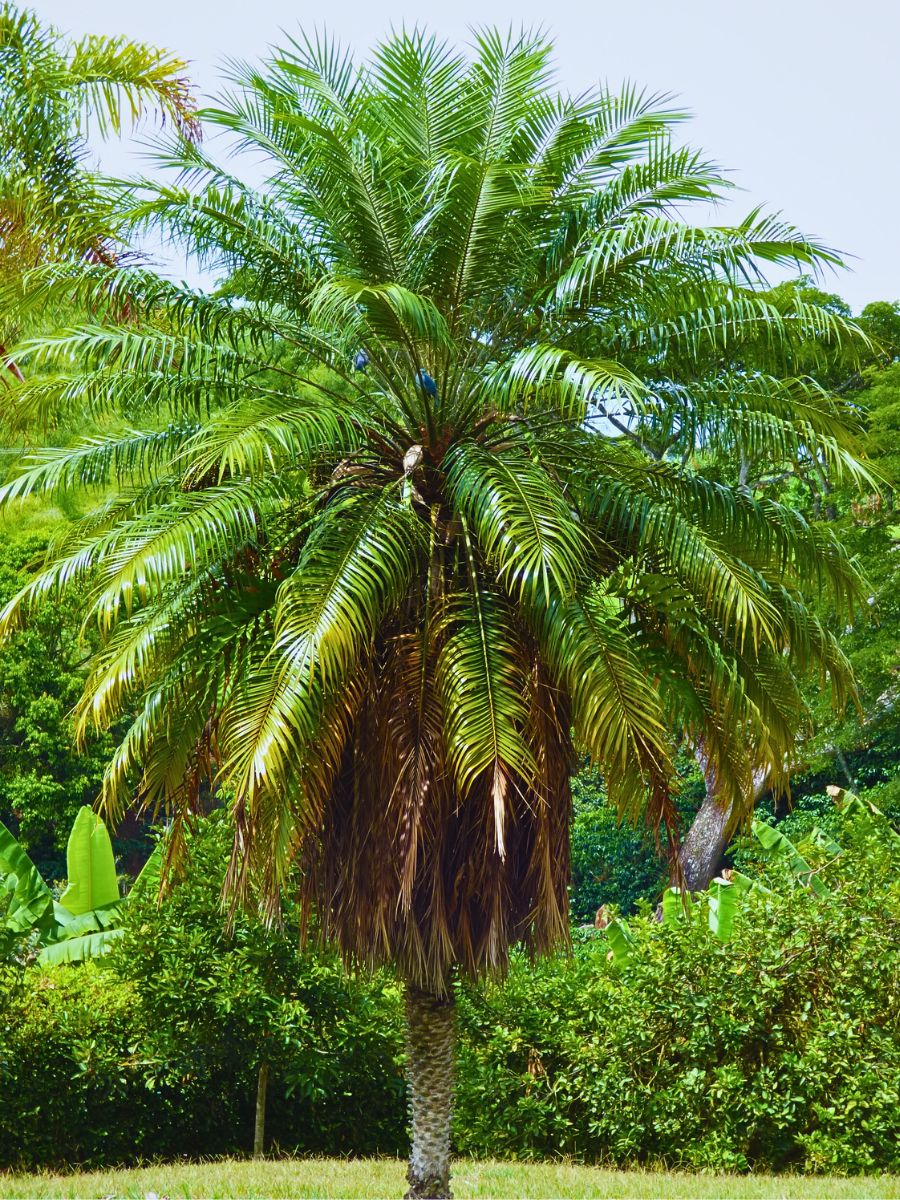
These naturally growing conditions provide valuable insights for successful home cultivation. The species was first described botanically in 1889, but didn't begin appearing in European and American gardens until the 1920s and 1930s. Its compact size and adaptability made it an instant favorite among landscape designers and homeowners seeking tropical flair without massive space requirements.
Today, the pygmy date palm is cultivated globally in suitable climates and has gained recognition as one of the most popular indoor palms in temperate regions. Its success comes from its forgiving nature and stunning appearance that works equally well in contemporary and traditional settings.

How to Plant a Pygmy Date Palm Successfully
Success with this palm cultivation begins with understanding planting requirements. The pygmy date palm prefers well-draining soil that retains some moisture but never stays waterlogged. A quality potting mix combined with perlite or coarse sand creates ideal drainage conditions for healthy root development.
When selecting a location, remember this palm appreciates bright, indirect light. While it tolerates some direct sunlight, particularly gentle morning sun, intense afternoon rays can scorch its fronds. Its ideal outdoor growing settings are spots receiving morning sun and afternoon shade.
Planting depth proves crucial for palm health. The root ball should sit at the same level it was growing previously, with the soil line matching the original depth. Planting too deeply can lead to devastating trunk rot, while shallow planting may cause instability and expose sensitive roots to damage.
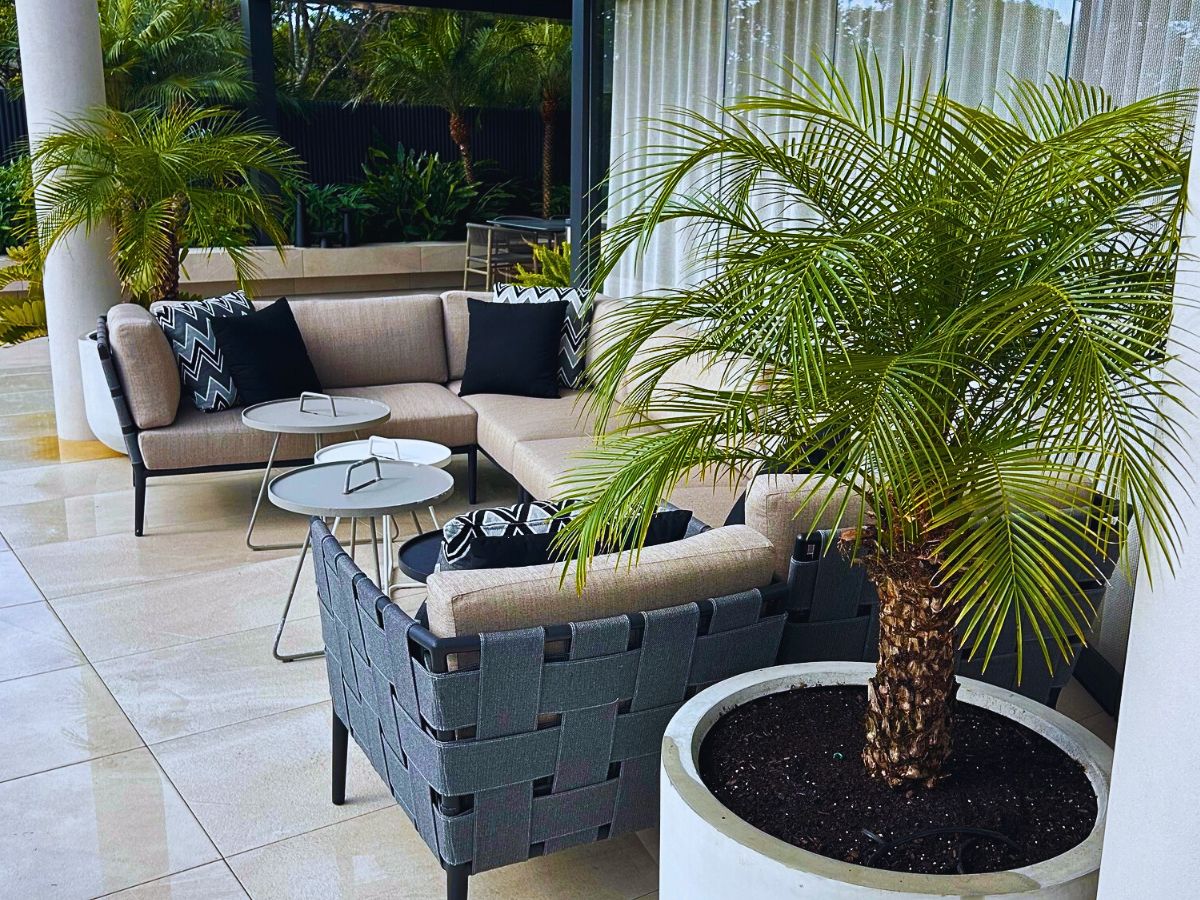
How to Plant a Pygmy Date Palm in the Ground
Pygmy date palm ground planting requires thoughtful site selection and thorough soil preparation. Choose a location protected from strong winds, as the palm can suffer significant frond damage in gusty conditions. The ideal spot receives filtered sunlight through tree canopies or enjoys natural protection from nearby structures.
Soil preparation begins with digging a hole twice as wide as the root ball but only as deep as necessary. This approach encourages beneficial lateral root growth and improves long-term stability. If your soil has poor drainage, consider creating a raised planting area or amending with organic matter and coarse materials to improve water movement.
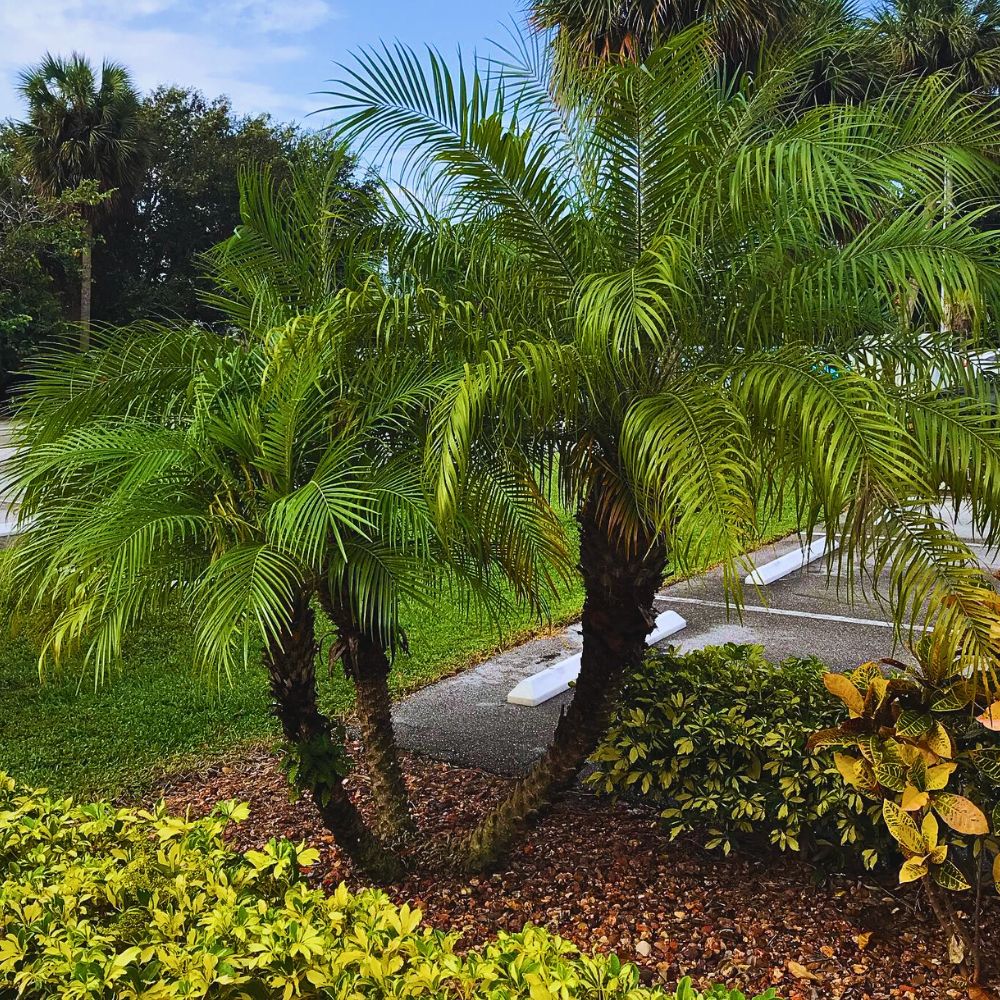
Before planting, water the palm thoroughly while it's still containerized. This ensures adequate root ball hydration and minimizes transplant shock. Once positioned correctly, backfill with a mixture of native soil and compost, gently firming to eliminate air pockets. Water deeply immediately after planting and maintain consistent moisture for several months as the palm establishes in its new location.
How to Plant a Pygmy Date Palm in a Pot
Container growing offers flexibility and allows gardeners in cooler climates to enjoy this tropical beauty year-round. How to plant pygmy date palm specimens in containers starts with selecting an appropriately sized pot. Choose a container 2 to 3 inches wider than the current root ball, ensuring adequate drainage holes.
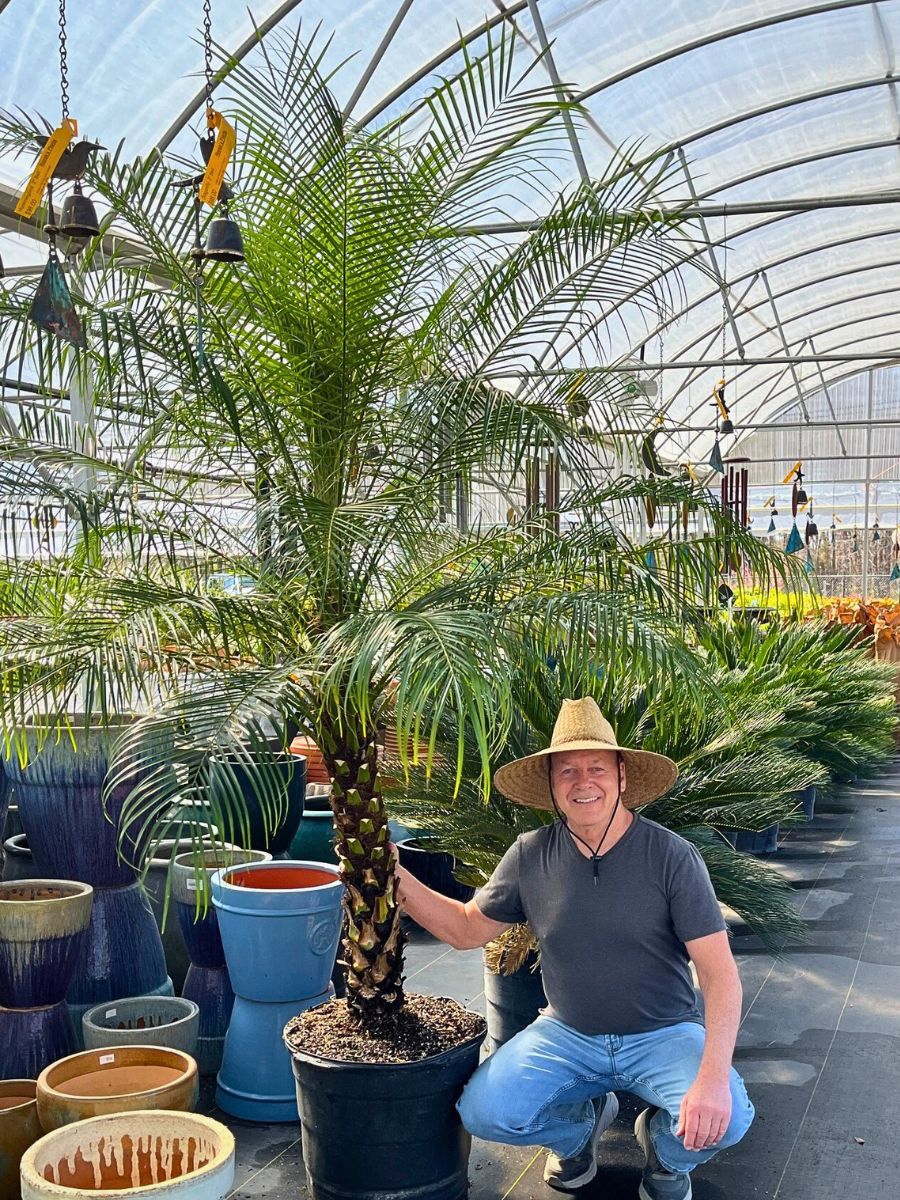
Terra cotta or ceramic pots work excellently, providing stability and allowing excess moisture to evaporate through the walls. Plastic containers are acceptable but require more careful watering management to prevent harmful waterlogging.
Layer the pot bottom with drainage material like broken pottery shards or gravel. This prevents soil from blocking drainage holes and ensures proper water flow. Fill the container partially with well-draining potting mix, position the palm at the correct depth, and fill around the roots, leaving about an inch of space below the rim for efficient watering.
Caring for Your Pygmy Date Palm
Watering is the most crucial aspect of pygmy date palm care. These palms prefer consistently moist but never soggy soil. Allow the top inch of soil to dry between waterings, then water thoroughly until excess drains from the bottom. During the growing season, this typically means watering every 3 to 5 days, while winter watering may be needed only weekly.
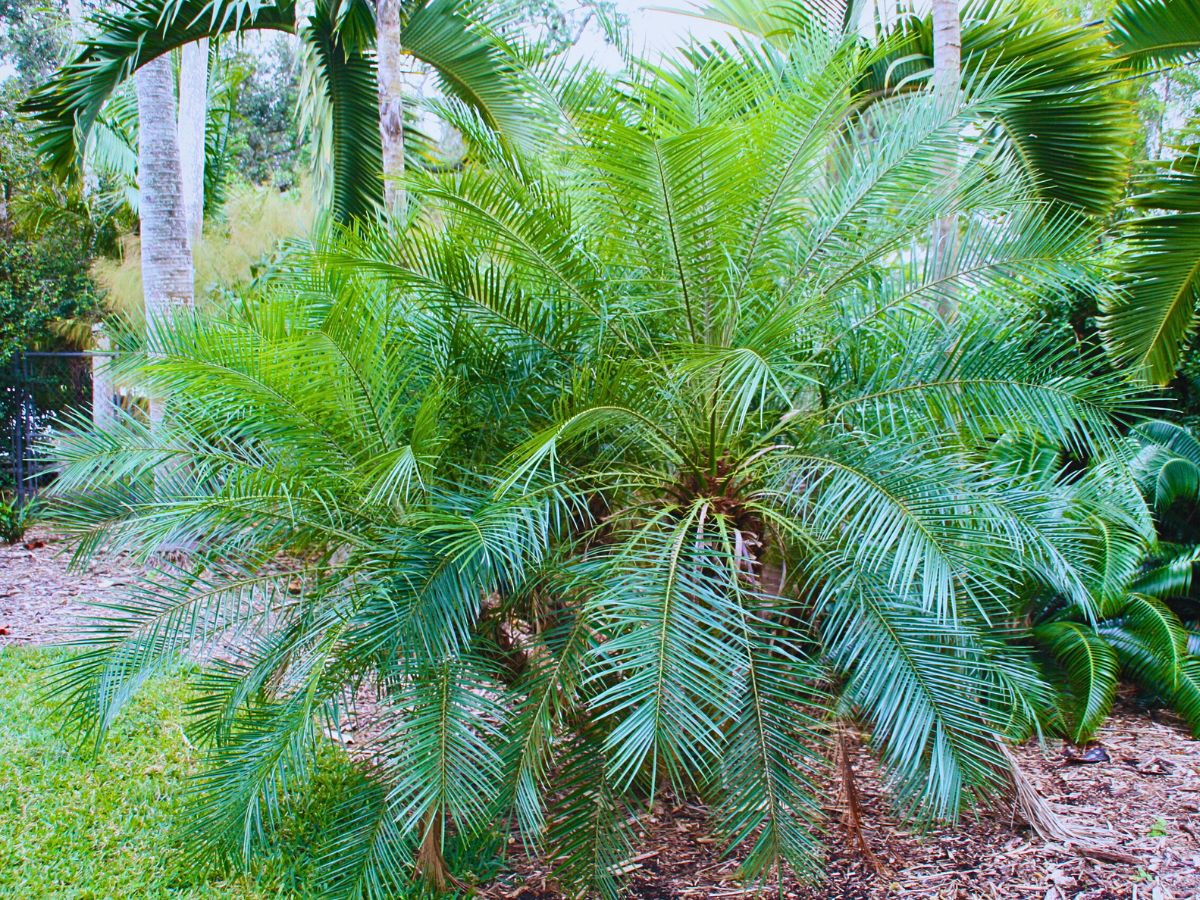
Humidity plays a significant role in plant health, especially for indoor specimens. The pygmy date palm thrives in humidity levels between 40% and 60%. Grouping plants, using humidity trays, or running a humidifier can help maintain optimal conditions in dry indoor environments.
Temperature preferences lean toward warmth, with ideal ranges between 18°C and 27°C. While the palm can tolerate brief temperature drops, prolonged cold exposure causes serious damage. This makes it suitable for USDA hardiness zones 9b through 11 for outdoor cultivation.
Pruning and Trimming Your Pygmy Date Palm
Proper pruning techniques ensure your pygmy date palm maintains health and an attractive appearance. The key principle with palm trimming is restraint–never remove green, healthy fronds as they provide essential nutrients through photosynthesis.
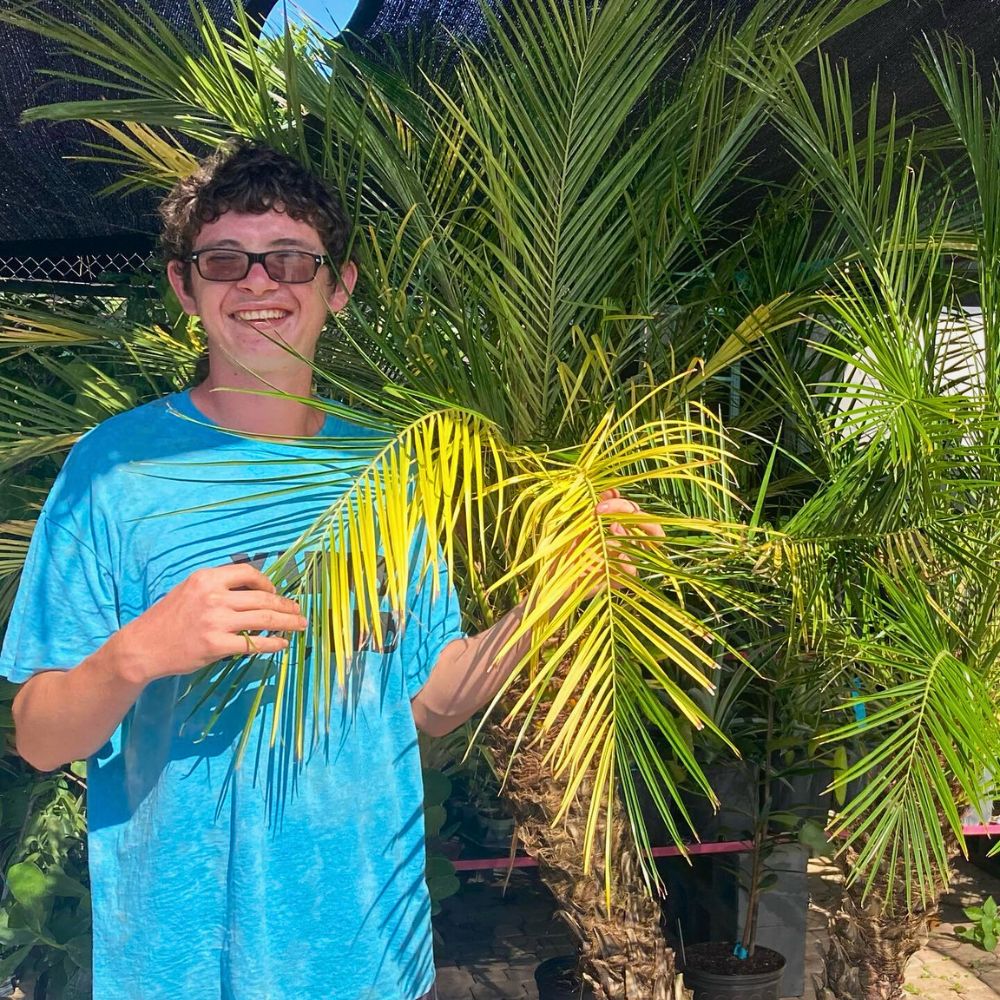
Only remove fronds that have turned completely brown and dry. When trimming, cut close to the trunk while avoiding trunk damage. Use clean, sharp pruning shears to prevent disease transmission and ensure clean cuts that heal properly.
Avoid over-pruning mistakes. Some gardeners incorrectly believe that removing fronds encourages new growth or improves appearance. In reality, excessive trimming weakens the plant and can lead to nutrient deficiencies that manifest as yellowing fronds or stunted growth.
Seed stalks should be removed unless you're interested in propagation. These flower spikes drain plant energy and can detract from ornamental appeal. Cut them off as soon as they appear, using the same clean cutting techniques.
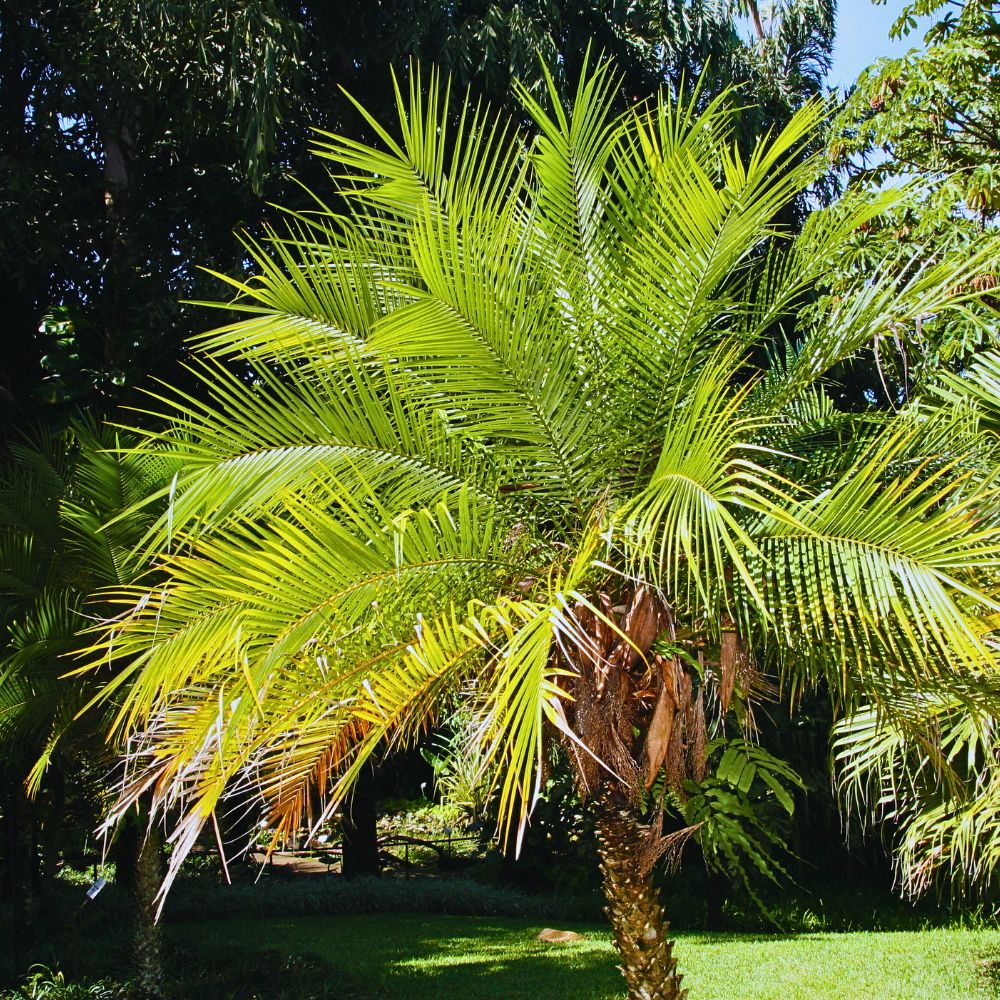
Pygmy Date Palms’ Fertilization and Seasonal Care
Pygmy date palms require regular fertilization during the growing season. A balanced, slow-release fertilizer applied every 3 to 4 months provides steady nutrition. Palm-specific fertilizers work particularly well as they contain necessary micronutrients, including manganese and magnesium.
During winter months, reduce fertilization frequency and adjust watering schedules as growth slows. Indoor plants may need less frequent watering due to lower light levels and cooler temperatures, while outdoor specimens in mild climates may continue slow growth throughout winter.
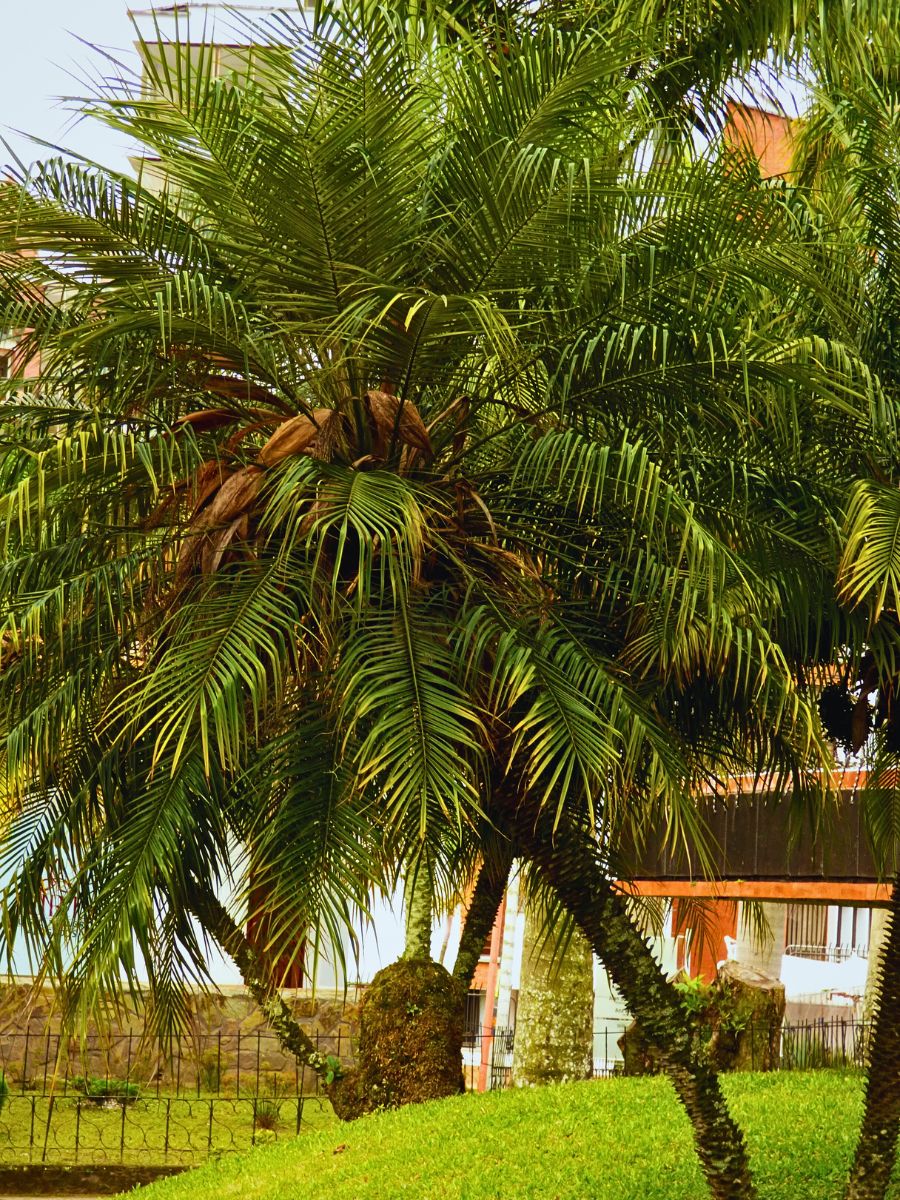
Spring marks the ideal time for repotting container-grown palms. Ideally, planting pygmy date palms in fresh soil every 2 to 3 years prevents them from getting pot-bound and refreshes the growing medium. Choose a container only slightly larger than the current one, as overly large pots can lead to watering difficulties.
Troubleshooting Common Issues of Pygmy Date Palms
Despite their generally easy-going nature, pygmy date palms can encounter several problems. Yellowing fronds often indicate watering issues–either too much or too little moisture. Brown leaf tips typically suggest low humidity or fluoride sensitivity from tap water. Using distilled or rainwater can effectively resolve this issue.

Spider mites can be problematic in dry indoor conditions, appearing as fine webbing on frond undersides. Increasing humidity and occasionally washing fronds with lukewarm water help prevent and control these pests. Scale insects may also appear as small, brown bumps on fronds and respond well to horticultural oil applications.
Root rot, usually caused by overwatering or poor drainage, presents as blackened, mushy roots and declining plant health. Prevention through proper watering practices and well-draining soil proves far more effective than attempting treatment after problems develop.
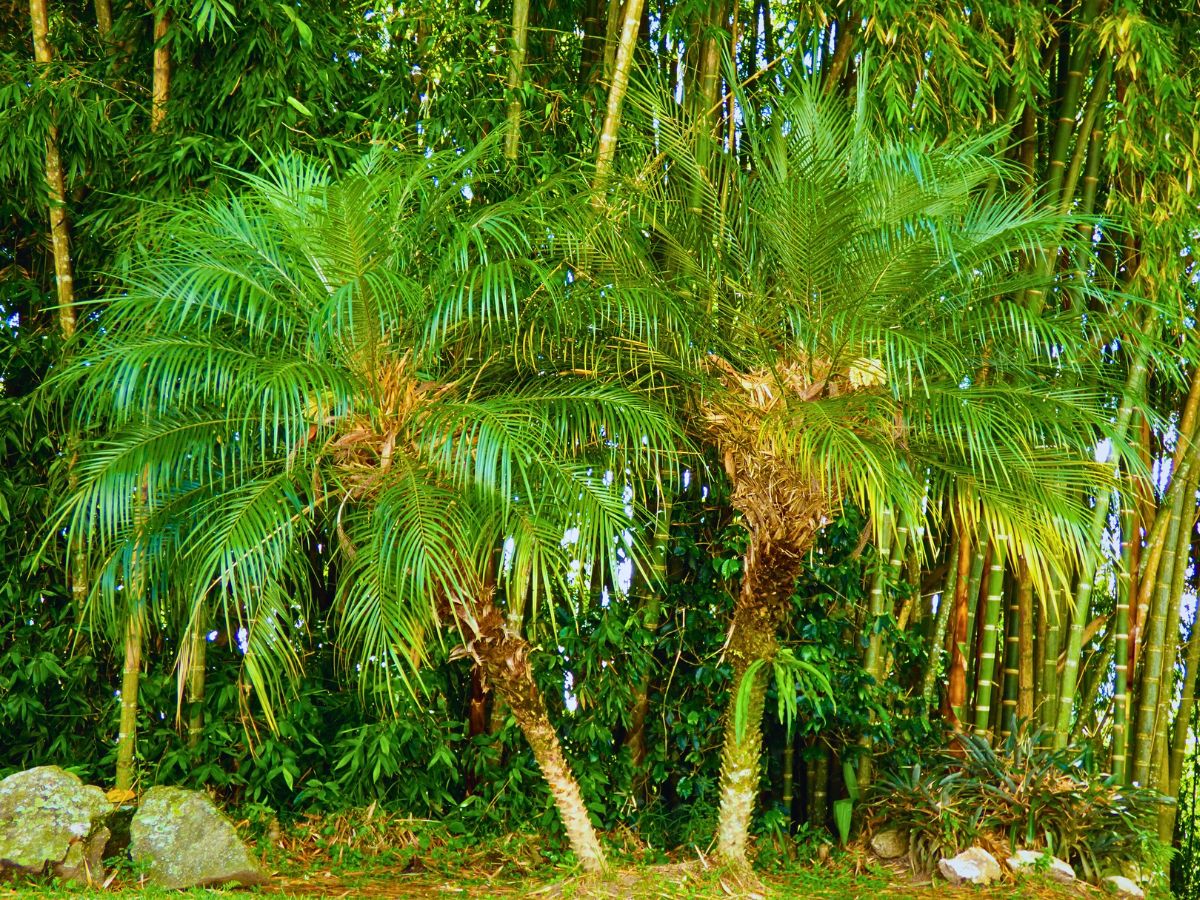
Decorating With Pygmy Date Palms
The versatility of the pygmy date palm makes it an excellent choice for a variety of decorative schemes. Indoors, these palms work as stunning focal points in entryways, living rooms, or offices. Their upright growth habit and elegant fronds create vertical interest without overwhelming smaller spaces.
For decorating purposes, consider the palm's mature size when positioning it in your home. Corner locations often work beautifully, providing adequate space to display the full canopy while creating a tropical accent that draws the eye upward naturally.
Outdoor decorating applications are equally impressive. Pygmy date palms work wonderfully as foundation plantings, especially near patios or poolside areas where their tropical appearance enhances a resort-like atmosphere. They also work well in container arrangements on decks and terraces.
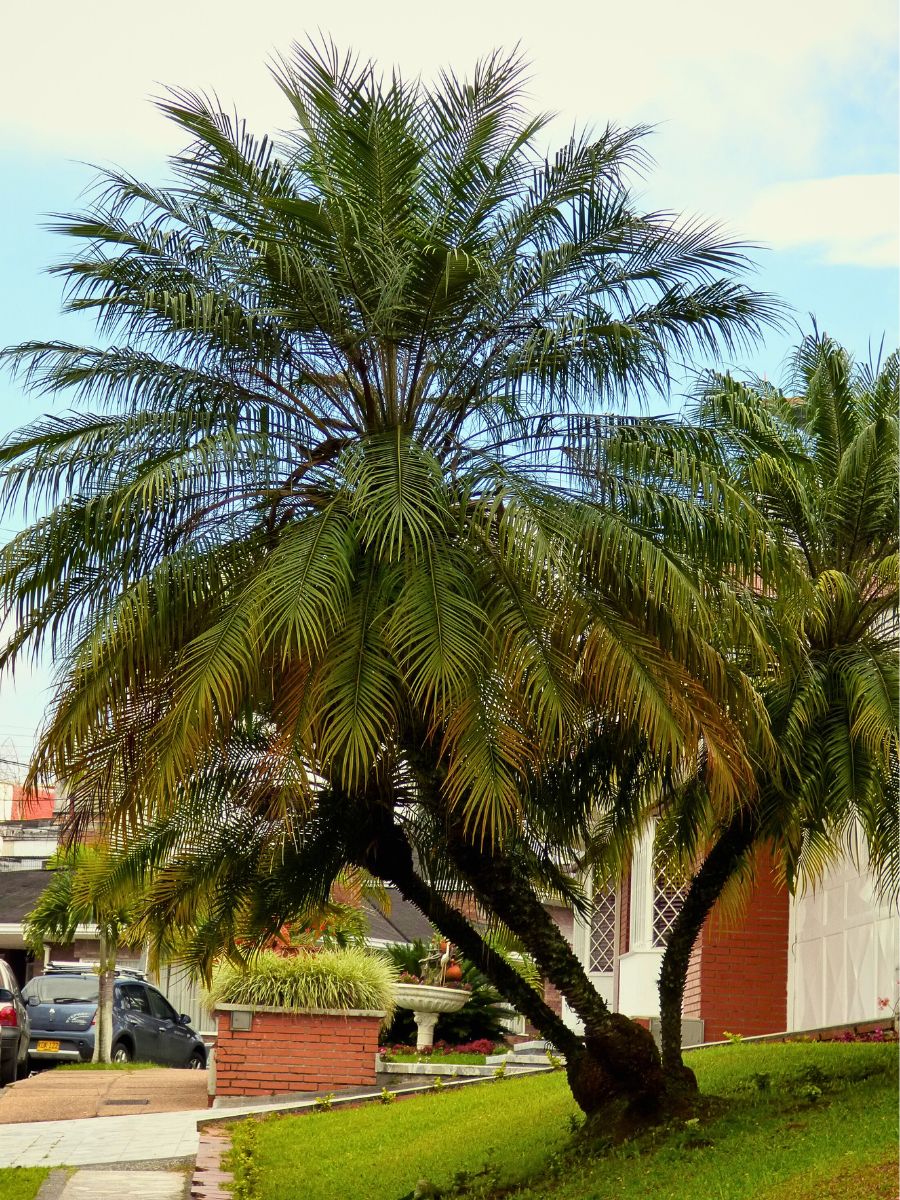
Grouping pygmy palm plantings creates a dramatic impact while maintaining individual character. Spacing several palms 4 to 6 feet apart allows each plant room to develop fully while creating cohesive tropical landscape elements. Creative placement ideas include using these palms as natural room dividers, positioning them near water features for enhanced tropical ambiance, or incorporating them into Mediterranean-style gardens alongside succulents and cacti.
Pygmy Date Palms Air Purification Benefits
The pygmy date palm earned recognition in NASA's Clean Air Study for its exceptional air-purifying capabilities. Research shows this palm effectively removes common household toxins, including formaldehyde, benzene, xylene, and toluene, from indoor air. These chemicals commonly originate from furniture, cleaning products, paints, and electronic equipment.
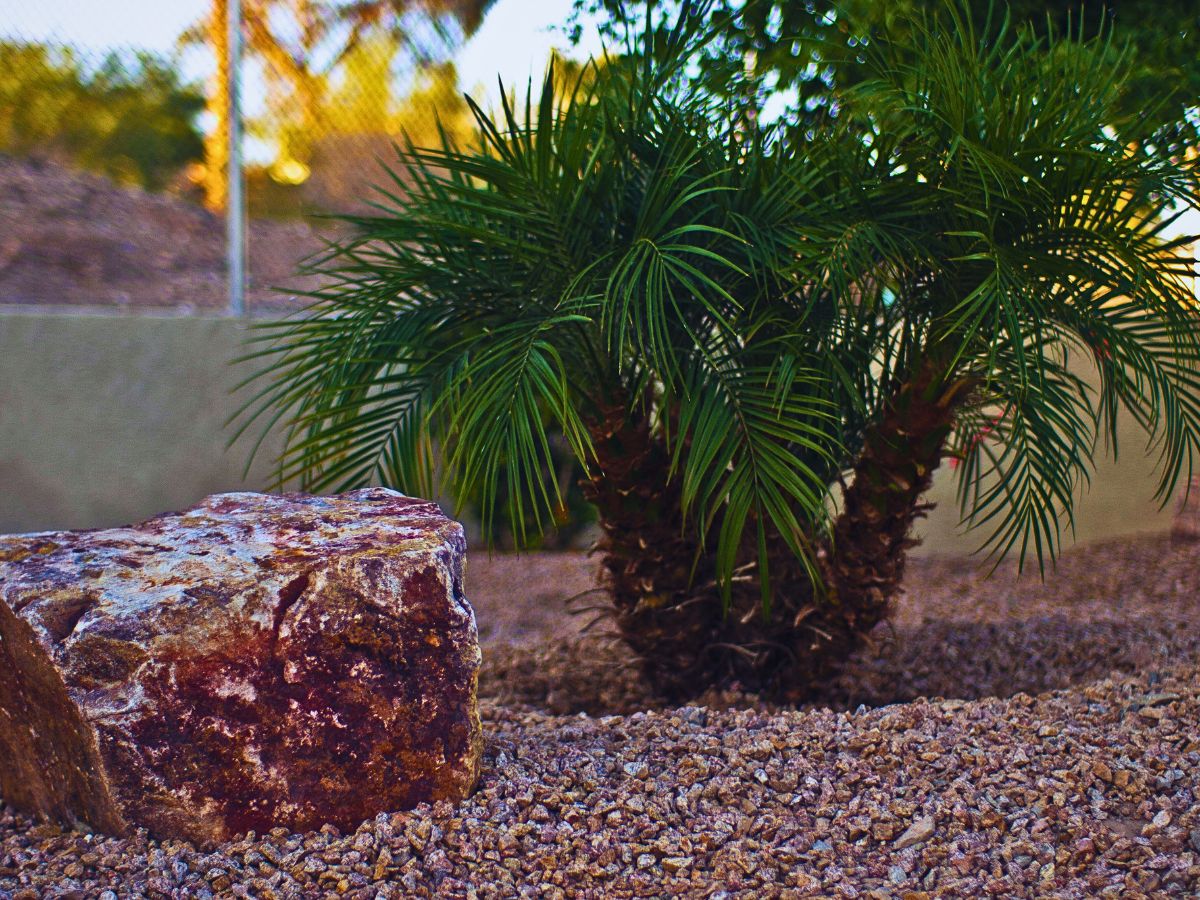
More health advantages also include natural humidification and stress reduction. The palm releases moisture into the surrounding air, helping maintain healthy humidity levels, particularly valuable in dry indoor environments. Studies also suggest that indoor plants like the pygmy date palm can lower blood pressure, reduce anxiety, and improve overall mental well-being through their calming presence. All these make this one of the most perfect plants to invest in.
Feature image by @acvarellvietnam. Header image by @theplantstandaz.

